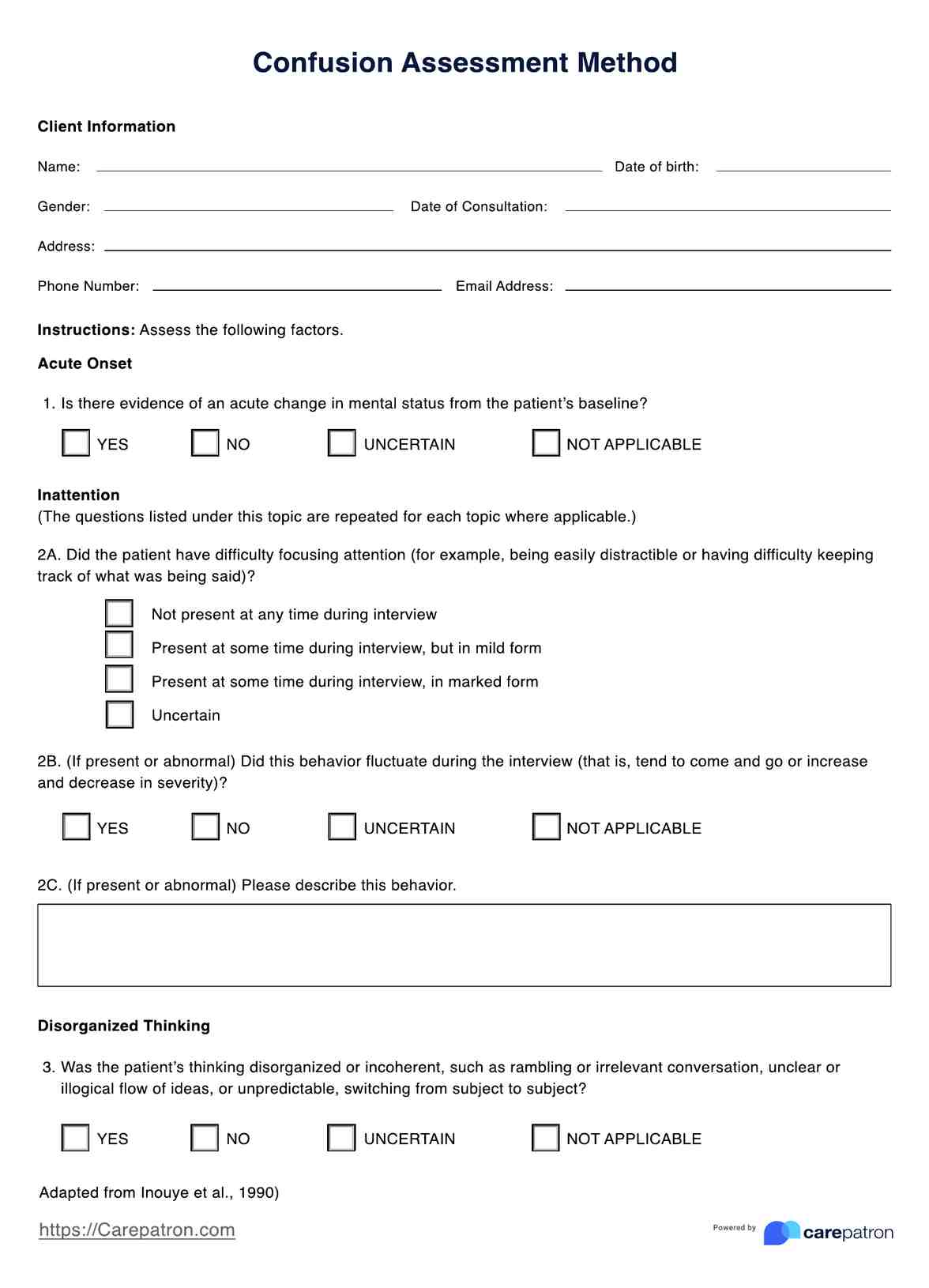The CAM can be administered by healthcare professionals trained to recognize and diagnose delirium. This may include physicians, nurses, and other healthcare providers.

Confusion Assessment Method
CAM is a validated tool used to assess and manage delirium in patients and may improve patient outcomes. Download this PDF now!
Use Template
Confusion Assessment Method Template
Commonly asked questions
The CAM can be administered in a relatively short amount of time, typically taking less than 10 minutes to complete.
Yes, the CAM questionnaire is a reliable tool for identifying and diagnosing patient delirium. It has been validated in multiple studies and is widely used by healthcare professionals.
EHR and practice management software
Get started for free
*No credit card required
Free
$0/usd
Unlimited clients
Telehealth
1GB of storage
Client portal text
Automated billing and online payments











